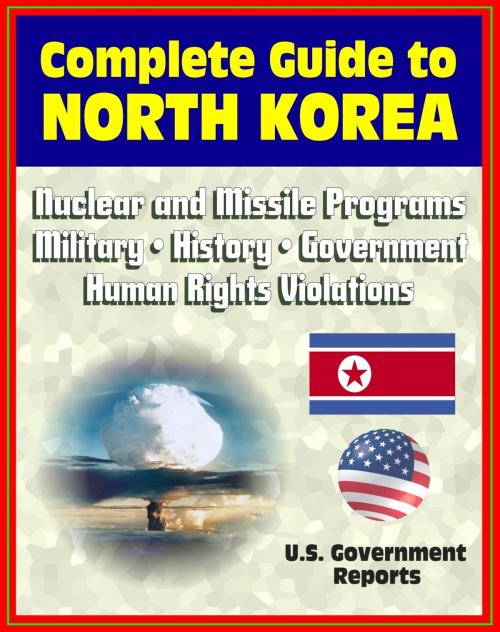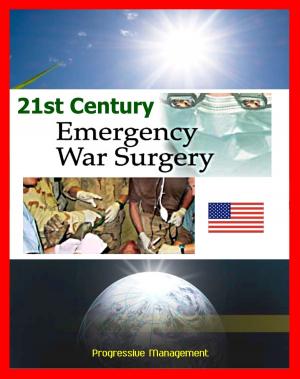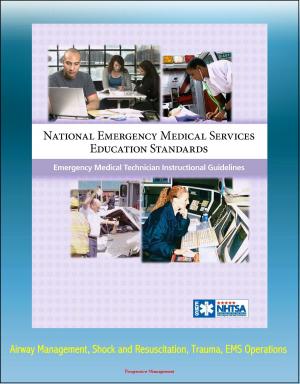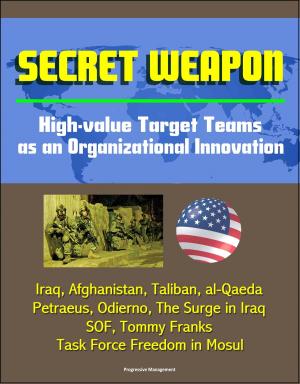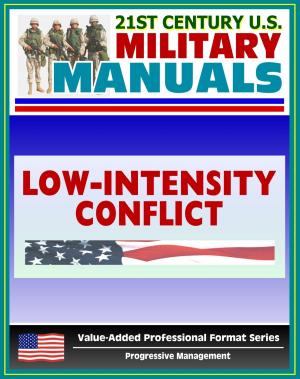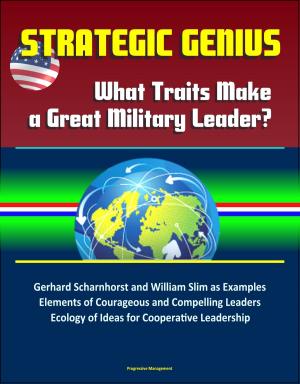2012 Complete Guide to North Korea (DRPK): Authoritative Coverage of Nuclear and Missile Programs, Kim Jong-il, Kim Jong-un, Confrontations with South Korea, Military, History, Economy, Human Rights
Nonfiction, Social & Cultural Studies, Political Science, Politics, Arms Control| Author: | Progressive Management | ISBN: | 9781476358048 |
| Publisher: | Progressive Management | Publication: | April 4, 2012 |
| Imprint: | Smashwords Edition | Language: | English |
| Author: | Progressive Management |
| ISBN: | 9781476358048 |
| Publisher: | Progressive Management |
| Publication: | April 4, 2012 |
| Imprint: | Smashwords Edition |
| Language: | English |
This massive compilation provides a complete picture of North Korea and its threatening nuclear weapon and missile programs with hundreds of pages of up-to-date information, featuring professional analysis and background data about the nation and its leadership. There is coverage of the government, military, human rights, and much more. The U.S. response to nuclear and missile testing, confrontations with South Korea, and changes in the dictatorship is included; extensive histories put the current situation into perspective. There is material from many agencies of the American government, including the experts at the Federal Research Division. North Korean country background data provides data on key parameters, people and history, industry, natural resources, and more. The Library of Congress Federal Research Division Country Study is an exceptional review of North Korea and its history.
Contents: Chapter 1: North Korea's Nuclear Weapons: Technical Issues * Chapter 2: State Department, White House, Department of Defense Material on North Korean Issues including Nuclear and Missile Programs, South Korean Attacks, Diplomacy * Chapter 3: North Korea Country Background Data (State Department and CIA) * Chapter 4: Human Rights Report: Democratic People's Republic of Korea * Chapter 5: North Korea: A Country Study * Chapter 6: North Korea Country Handbook, Marine Corps Intelligence Handbook - North Korea Military Equipment Recognition
North Korea's Nuclear Weapons: Technical Issues - This report summarizes what is known from open sources about the North Korean nuclear weapons program—including weapons-usable fissile material and warhead estimates—and assesses current developments in achieving denuclearization. Little detailed open-source information is available about the DPRK's nuclear weapons production capabilities, warhead sophistication, the scope and success of its uranium enrichment program, or extent of its proliferation activities. In total, it is estimated that North Korea has between 30 and 50 kilograms of separated plutonium, enough for at least half a dozen nuclear weapons. While North Korea's weapons program has been plutonium-based from the start, in the past decade, intelligence emerged pointing to a second route to a bomb using highly enriched uranium. North Korea openly acknowledged a uranium enrichment program in 2009, but has said its purpose is the production of fuel for nuclear power. In November 2010, North Korea showed visiting American experts early construction of a 100 MWT light-water reactor and a newly built gas centrifuge uranium enrichment plant, both at the Yongbyon site. The North Koreans claimed the enrichment plant was operational, but this has not been independently confirmed. U.S. officials have said that it is likely other, clandestine enrichment facilities exist. A February 2012 announcement commits North Korea to moratoria on nuclear and long-range missile testing as well as uranium enrichment suspension at Yongbyon under IAEA monitoring.
North Korea: A Country Study: Comprehensive, unique, and up-to-date information and professional analysis of North Korean political, economic, social, military, and national security systems and institutions, written by the experts at the Federal Research Division. Contents: Country Profile * Chapter 1. Historical Setting * The Origins Of The Korean Nation * Korea In The Nineteenth-Century * The Rise Of Korean Nationalism And The Three Kingdoms Period * Paekche * Silla * Korea under Silla * The Choson Dynasty * Florescence * Dynastic Decline * World Order * Japanese Colonialism, 1910–45 * Communism * National Division In The 1940s * Tensions In The 1940s * U.S. And Soviet Occupations * The Arrival Of Kim Il Sung * The Establishment Of The Democratic People’s Republic Of Korea * The Korean War, 1950–53 * much more.
This massive compilation provides a complete picture of North Korea and its threatening nuclear weapon and missile programs with hundreds of pages of up-to-date information, featuring professional analysis and background data about the nation and its leadership. There is coverage of the government, military, human rights, and much more. The U.S. response to nuclear and missile testing, confrontations with South Korea, and changes in the dictatorship is included; extensive histories put the current situation into perspective. There is material from many agencies of the American government, including the experts at the Federal Research Division. North Korean country background data provides data on key parameters, people and history, industry, natural resources, and more. The Library of Congress Federal Research Division Country Study is an exceptional review of North Korea and its history.
Contents: Chapter 1: North Korea's Nuclear Weapons: Technical Issues * Chapter 2: State Department, White House, Department of Defense Material on North Korean Issues including Nuclear and Missile Programs, South Korean Attacks, Diplomacy * Chapter 3: North Korea Country Background Data (State Department and CIA) * Chapter 4: Human Rights Report: Democratic People's Republic of Korea * Chapter 5: North Korea: A Country Study * Chapter 6: North Korea Country Handbook, Marine Corps Intelligence Handbook - North Korea Military Equipment Recognition
North Korea's Nuclear Weapons: Technical Issues - This report summarizes what is known from open sources about the North Korean nuclear weapons program—including weapons-usable fissile material and warhead estimates—and assesses current developments in achieving denuclearization. Little detailed open-source information is available about the DPRK's nuclear weapons production capabilities, warhead sophistication, the scope and success of its uranium enrichment program, or extent of its proliferation activities. In total, it is estimated that North Korea has between 30 and 50 kilograms of separated plutonium, enough for at least half a dozen nuclear weapons. While North Korea's weapons program has been plutonium-based from the start, in the past decade, intelligence emerged pointing to a second route to a bomb using highly enriched uranium. North Korea openly acknowledged a uranium enrichment program in 2009, but has said its purpose is the production of fuel for nuclear power. In November 2010, North Korea showed visiting American experts early construction of a 100 MWT light-water reactor and a newly built gas centrifuge uranium enrichment plant, both at the Yongbyon site. The North Koreans claimed the enrichment plant was operational, but this has not been independently confirmed. U.S. officials have said that it is likely other, clandestine enrichment facilities exist. A February 2012 announcement commits North Korea to moratoria on nuclear and long-range missile testing as well as uranium enrichment suspension at Yongbyon under IAEA monitoring.
North Korea: A Country Study: Comprehensive, unique, and up-to-date information and professional analysis of North Korean political, economic, social, military, and national security systems and institutions, written by the experts at the Federal Research Division. Contents: Country Profile * Chapter 1. Historical Setting * The Origins Of The Korean Nation * Korea In The Nineteenth-Century * The Rise Of Korean Nationalism And The Three Kingdoms Period * Paekche * Silla * Korea under Silla * The Choson Dynasty * Florescence * Dynastic Decline * World Order * Japanese Colonialism, 1910–45 * Communism * National Division In The 1940s * Tensions In The 1940s * U.S. And Soviet Occupations * The Arrival Of Kim Il Sung * The Establishment Of The Democratic People’s Republic Of Korea * The Korean War, 1950–53 * much more.
